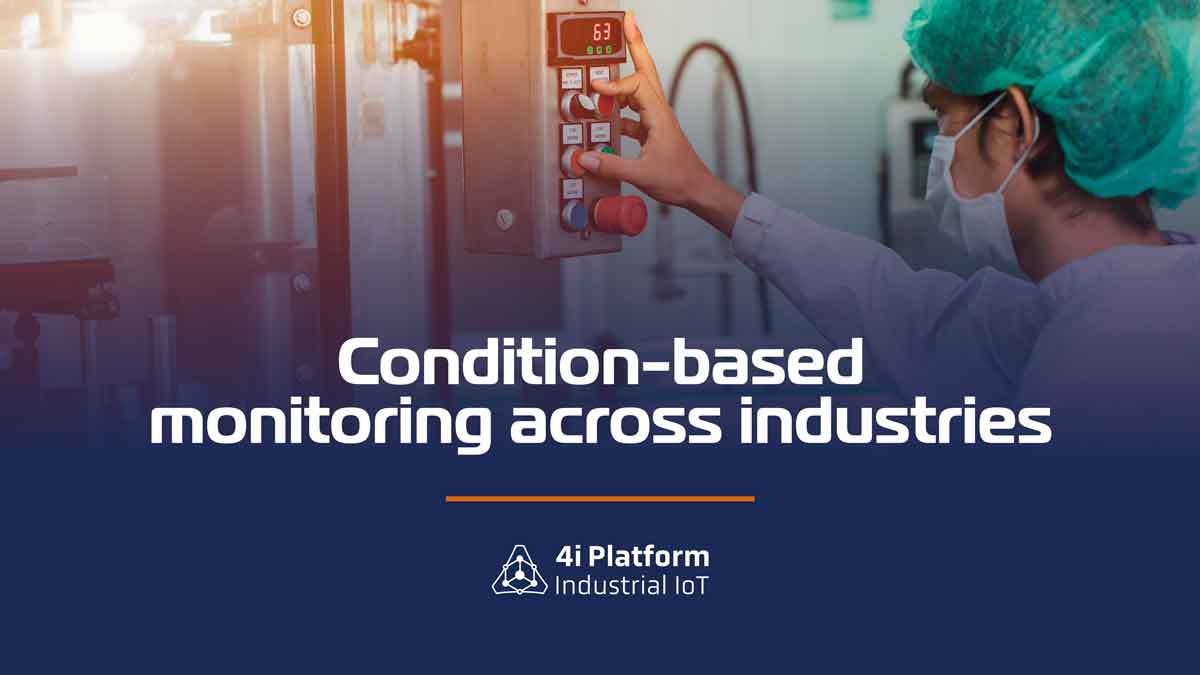The Internet of things technology is revolutionizing industries across the board. Businesses are thriving to their full potential with IoT-based solutions. This increases productivity. As the services are more quality-based than quantity, customers have been extremely satisfied. How are different industries making this possible?
It is imperative to monitor the condition of tools and equipment. However, managers will find it difficult to manage multiple tools simultaneously. The process could be simpler if an architecture system such as IoT technology were to connect all the pieces of machinery and perform real-time condition-based monitoring.
As a result, managers will be able to create a great business strategy using the extracted data and make better decisions.
Different industries have different equipment that can be tracked in real time with advanced gateways and sensor devices.
Condition-based Monitoring Overview
How do you monitor the actual condition of an asset? IoT connectivity allows live analysis to improve machines’ performance. It also allows for constant data extraction and report generation.
This type of monitoring is present in almost all industries. For example, manufacturing uses many pieces of heavy-duty equipment that require monitoring and timely checks.
IoT technology has made it possible for managers to improve manufacturing productivity by making it easier with sensor-based connectivity. This usually improves efficiency and asset health and provides perks such as instant decision-making and progress toward a better future.
Modern technology such as IoT is being used in the manufacturing industry to monitor machine health, connect critical equipment, and analyze machine vibrations, noise, fuel consumption, among other characteristics. This gives way for the digital transformation of all industries, which greatly contributes to the specific industrial processes.
Below are some examples of how IIoT transforms condition-based monitoring in different industries.
Transportation Industry
Implementing IoT technology for transportation has made great strides in automating the industry. Everything is being digitalized for industrial growth, from the sensorization of vehicles to smart contracts. The Internet of things, which has trillions of connected IoT devices, is becoming the most valuable technology for data analytics, data visualization, automation, and other purposes.
Transportation industry involves many assets such as vehicles, cargo, warehouses, and others that require regular inspections. Smart condition-based monitoring solutions can be very effective. In addition, it provides real-time monitoring of the vehicle’s condition, including fuel consumption, tire pressure, and health.
Therefore, condition-based monitoring provides more options for managers to make better decisions and provide more information about cargo.
Condition-based monitoring in the Oil & Gas Industry
The oil and gas industry benefits from the adoption of IoT solutions as well. This improves safety and increases profits. It also greatly impacts industrial processes through real-time asset tracking, predictive maintenance, and detailed information in the simplest visual way. McKinsey reports state that IoT could have an economic impact of approximately $3.9 trillion to $11.1 billion by 2025.
The oil and gas industry has such an economic impact that it is ready to use IoT-based solutions to improve its growth. A IoT-powered condition-based monitoring system in O&G can be a great benefit. It allows digitization and optimizes processes.
This allows industrialists to take a leap forward and transform their businesses into an advanced platform. IoT condition-based monitoring for the petroleum sector provides better options to monitor the condition of parameters such as temperature and humidity. This cumulatively predicts the equipment’s health.
Power Industry
Condition-based monitoring, which uses IoT to provide businesses with unique opportunities to evaluate the health of critical components and heavy machinery without having to schedule regular maintenance, is an advanced concept. This allows managers to save time and stay updated.
IoT condition-based monitoring also allows managers to monitor machinery as it operates, thereby reducing downtime and improving quality. A IoT-based condition monitor solution for the power sector is a sophisticated method to prevent equipment failures and maximize the machine’s uptime.
Condition-based monitoring uses visual data from multiple sensors integrated into a software system. This provides accurate and effective results.
Beverage Industry
The advancements in sensor technology and functionality are accelerating the IoT’s role in the beverage industry. This is the best way to monitor the volume and level of the beverage. Industrialists are looking for a solution to help figure out the health of equipment in the beverage industry, given the large containers and various sizes of tanks in use. In addition, it helps industries stay competitive and produce high-quality food.
Condition-based monitoring typically refers to the analysis of the conditions in machinery. The beverage industry uses IoT-based condition monitors to determine the temperature, humidity, and vibrations that affect the machinery.
This gives you a pretty clear view of the equipment’s performance and areas that need to be addressed. IoT technology also offers a variety of perks, such as the ability to generate custom reports in a simplified format and share them with authorities with a single click.





